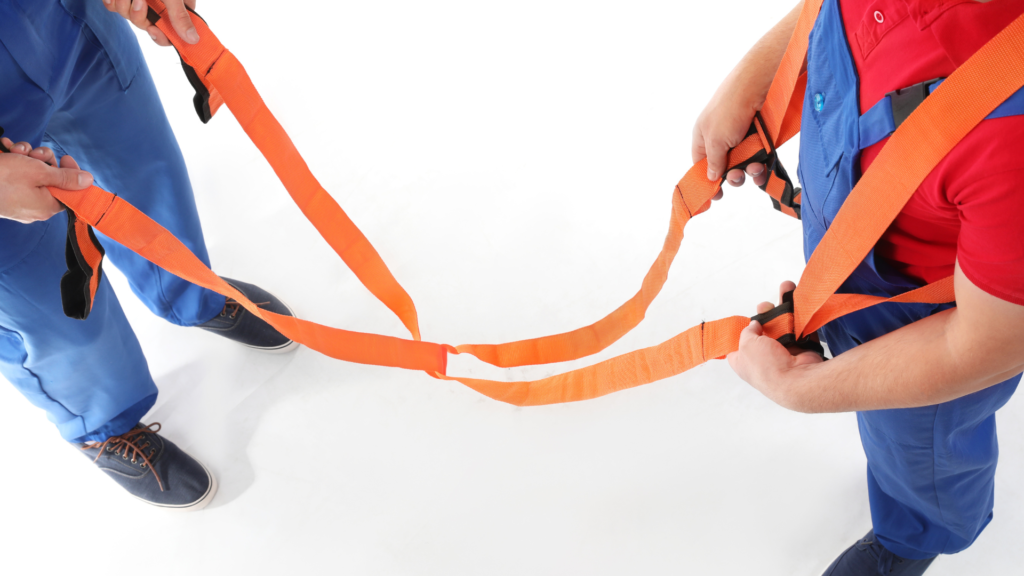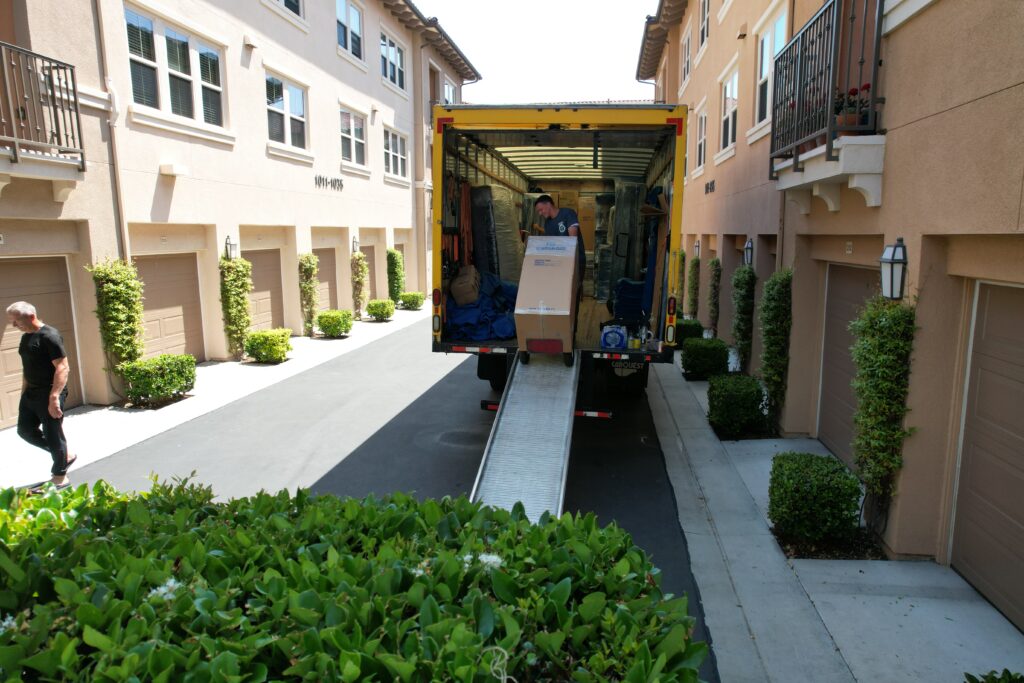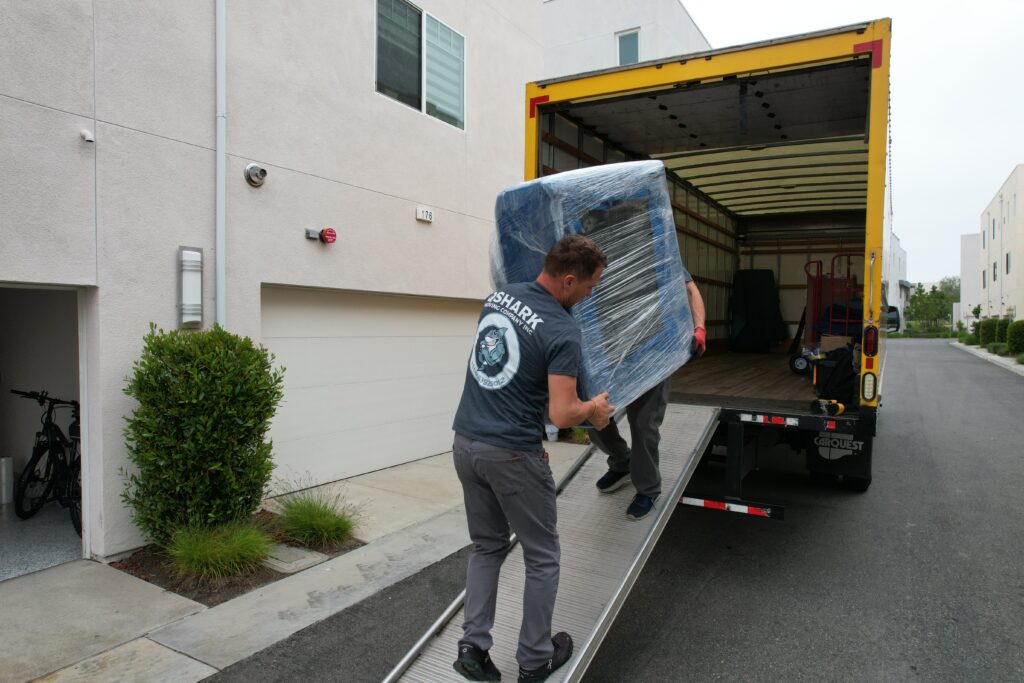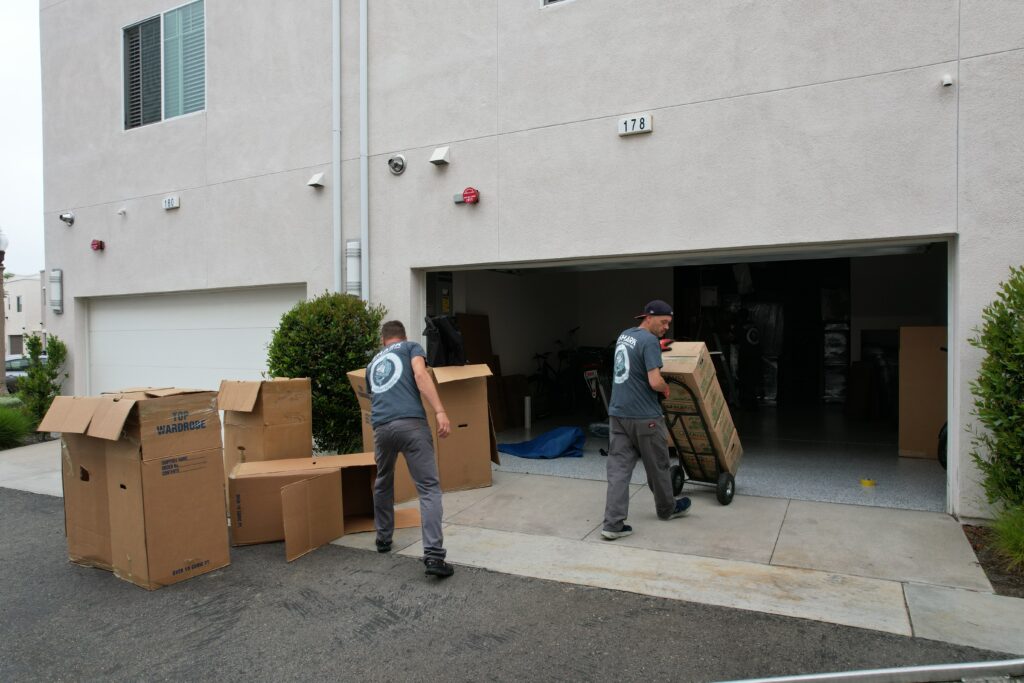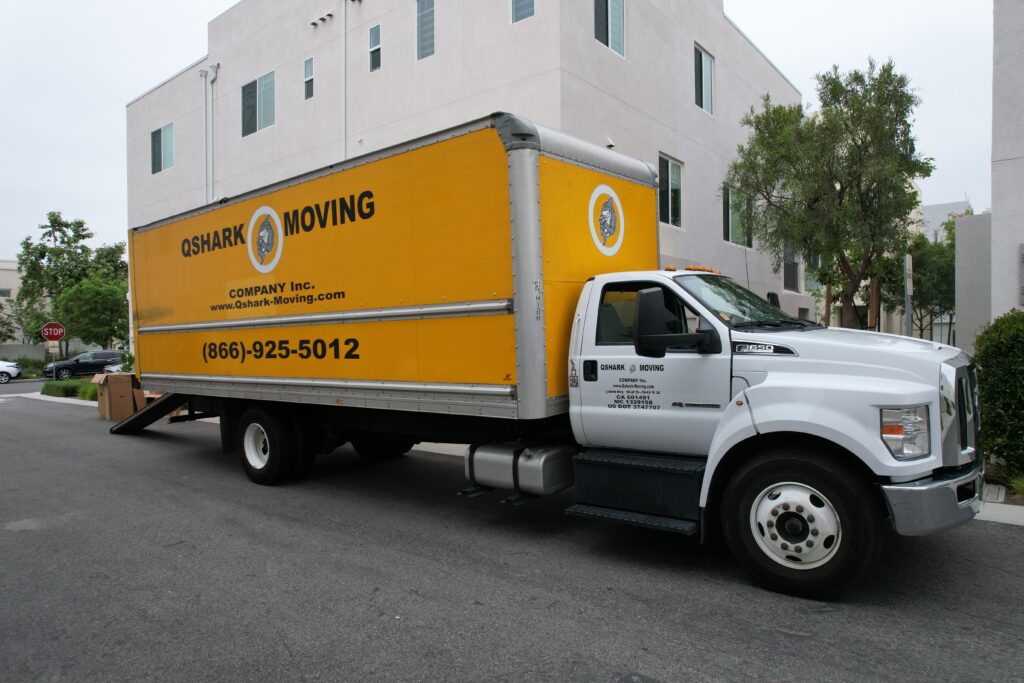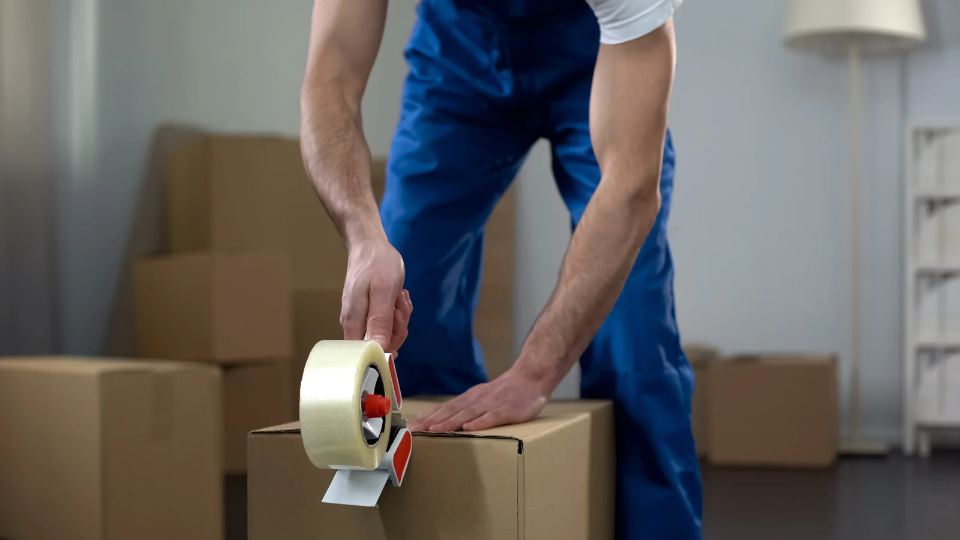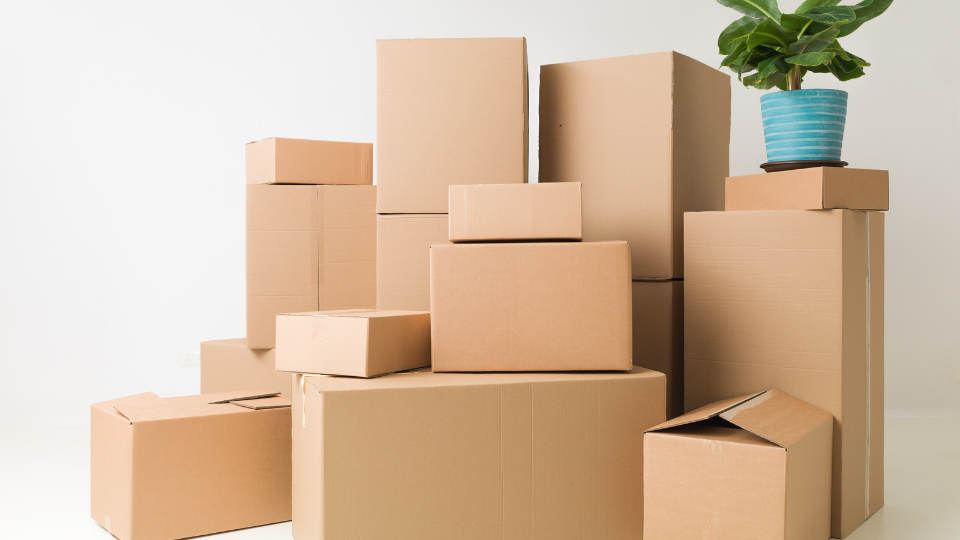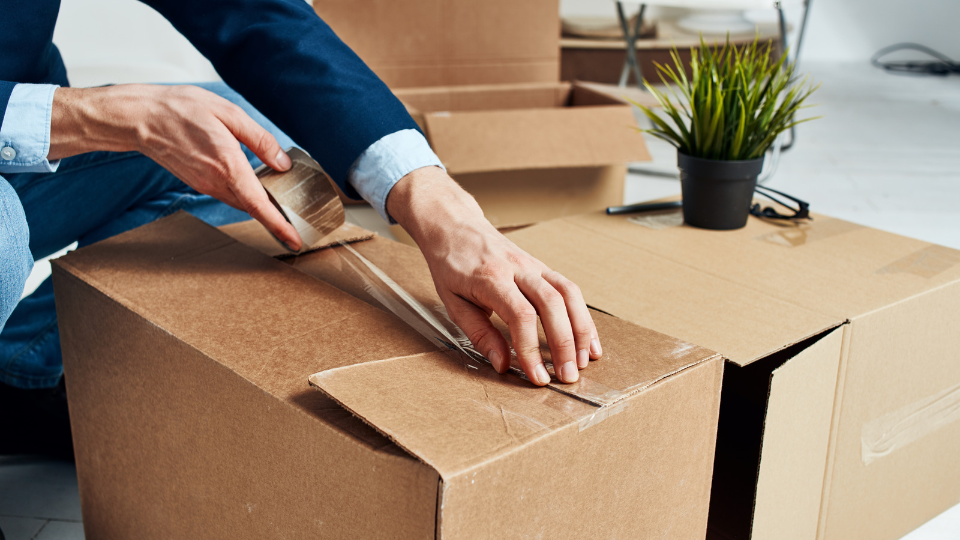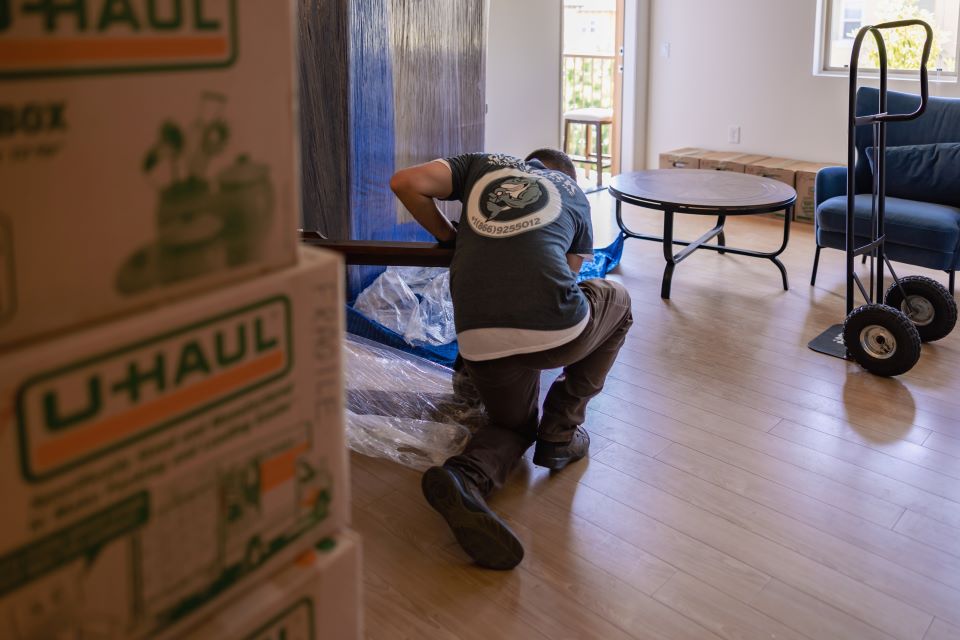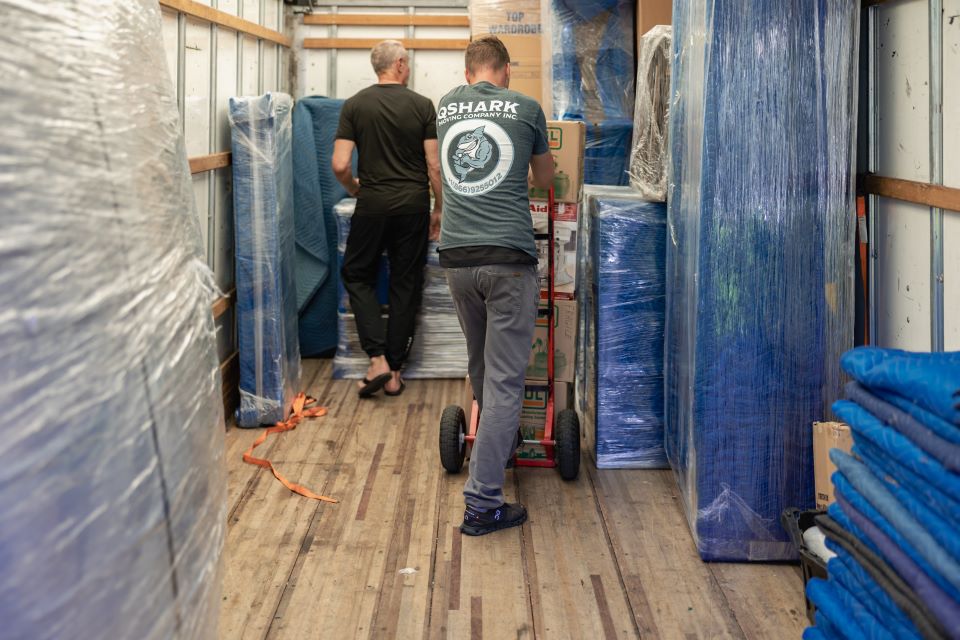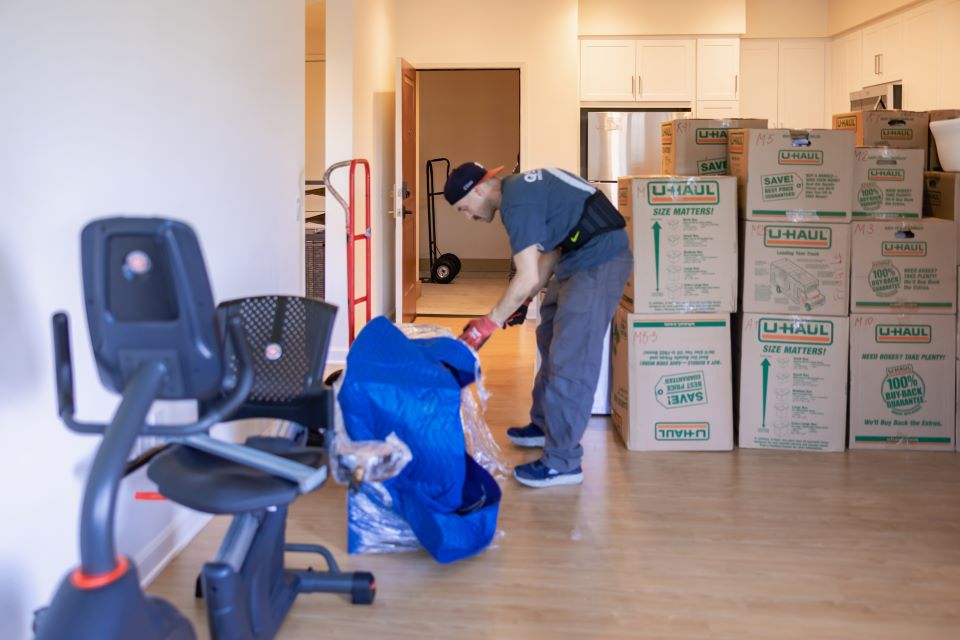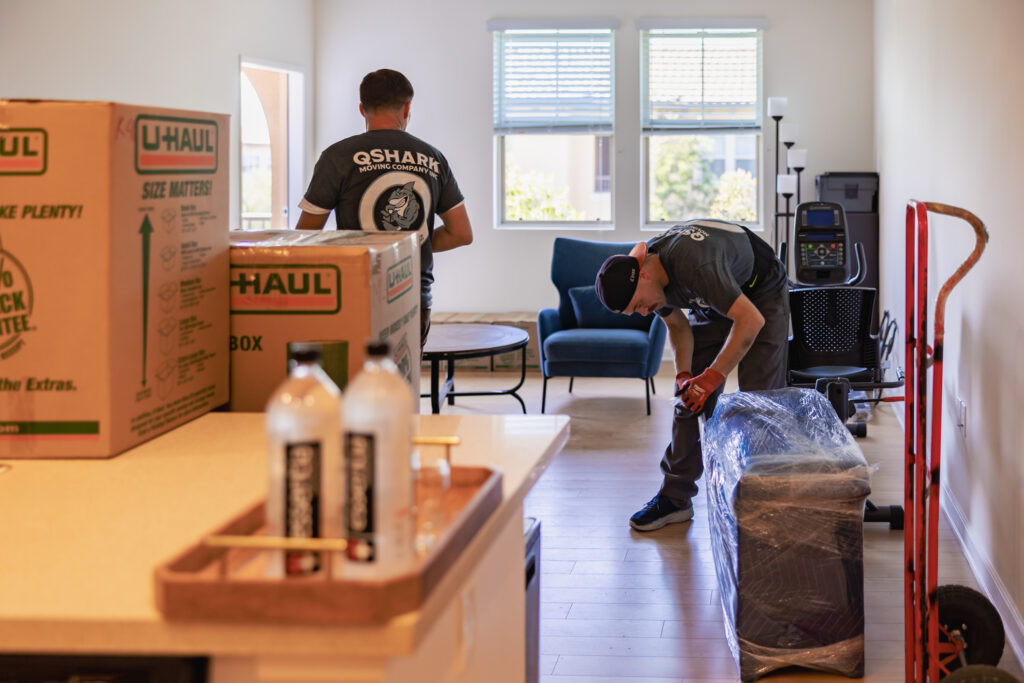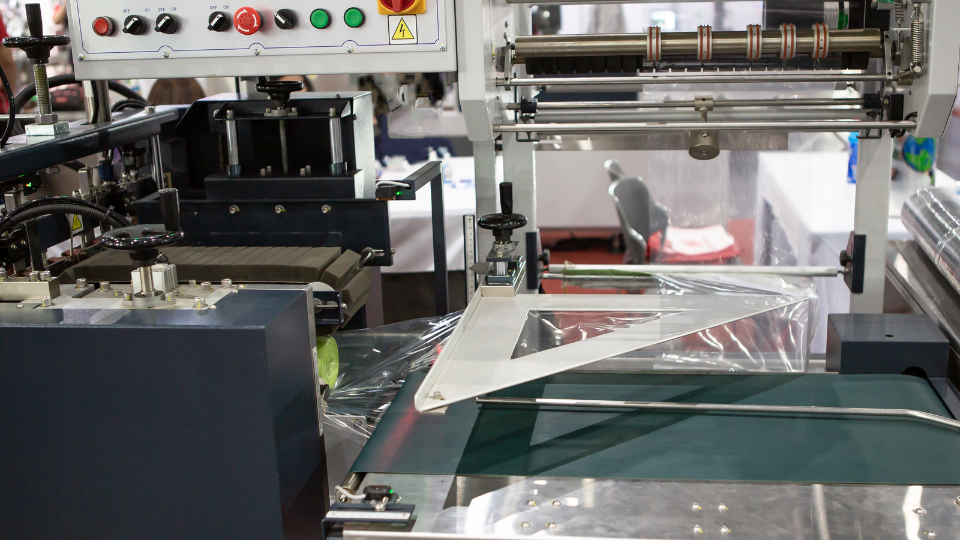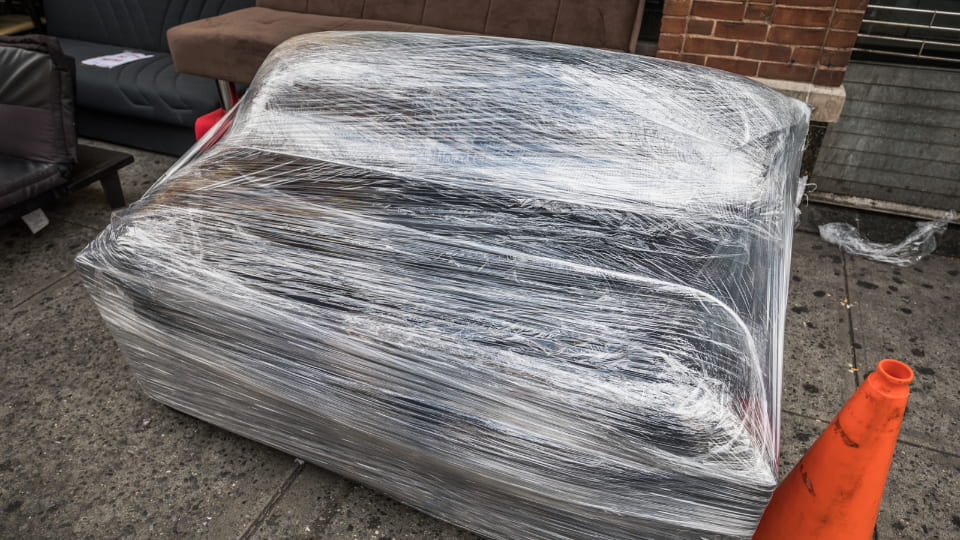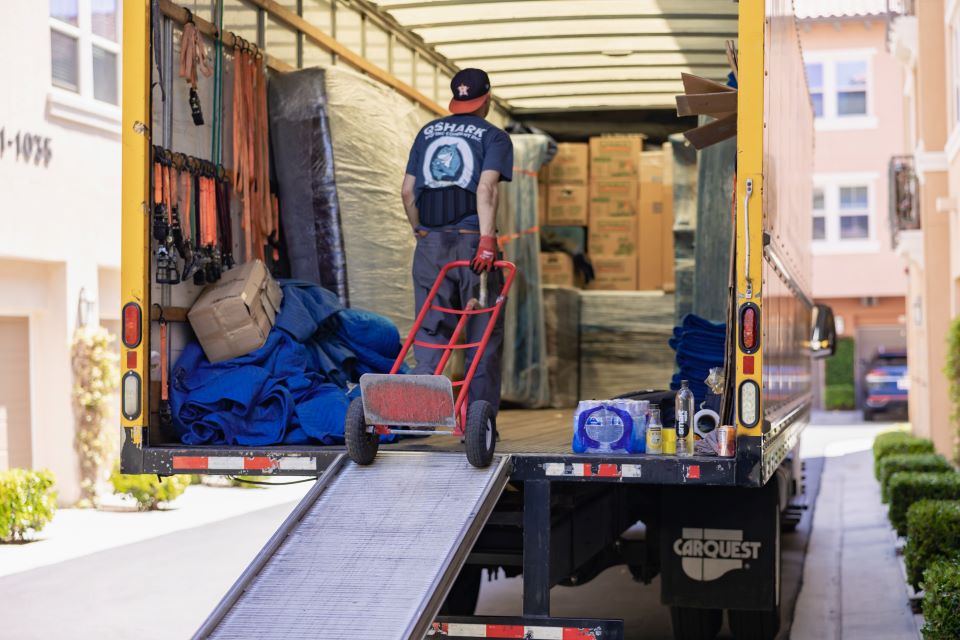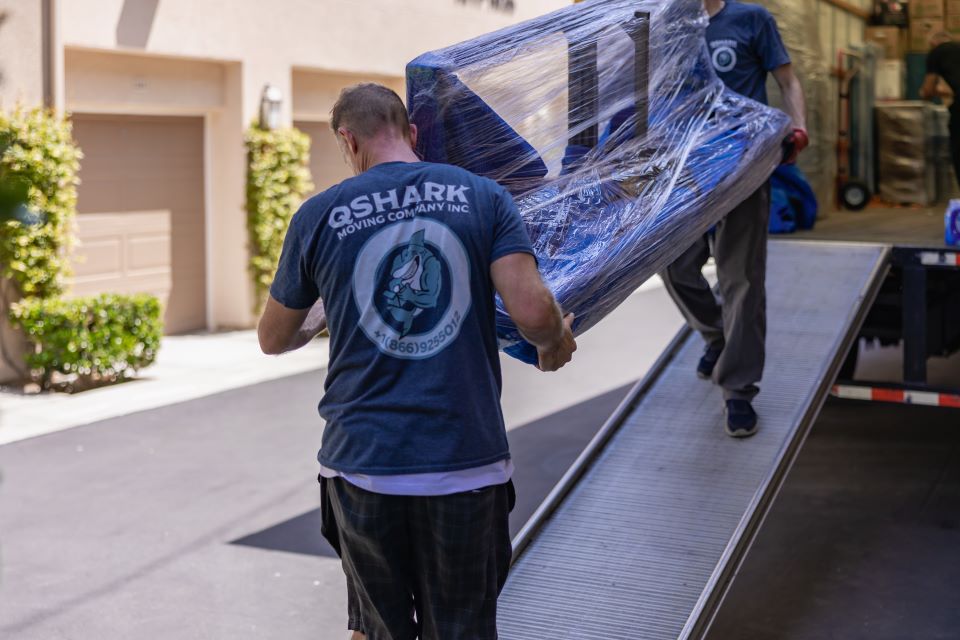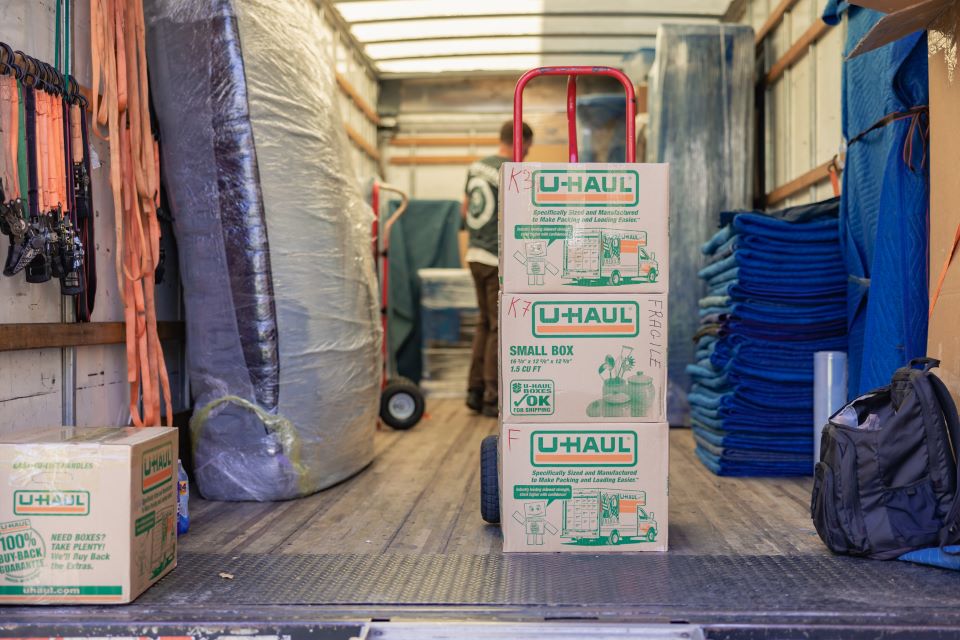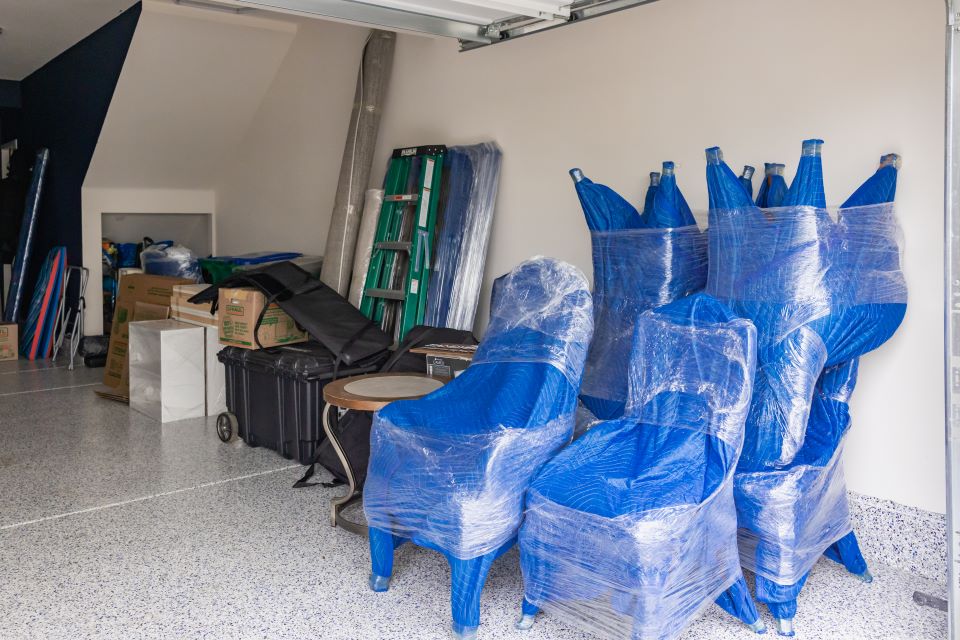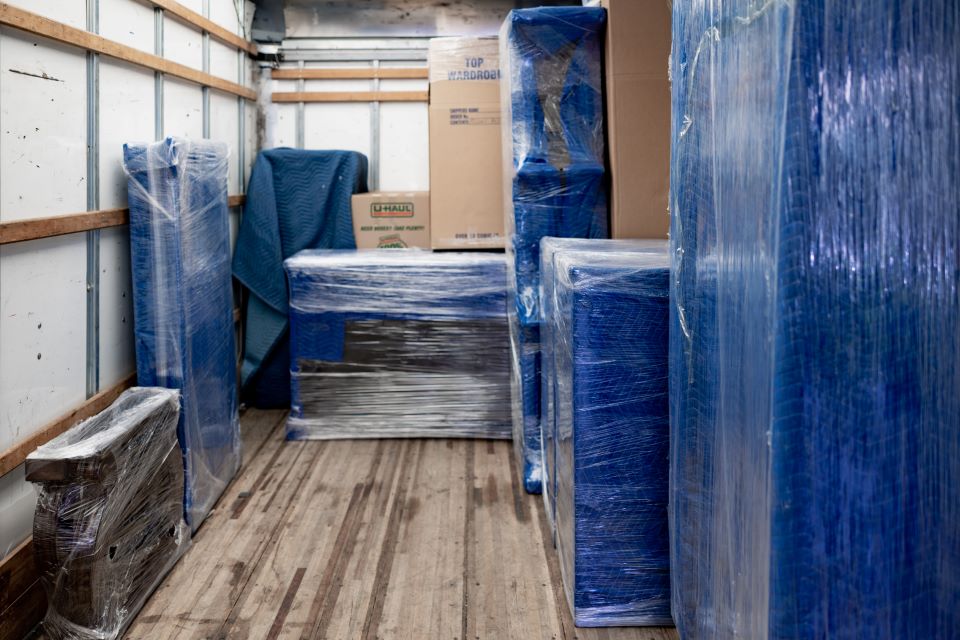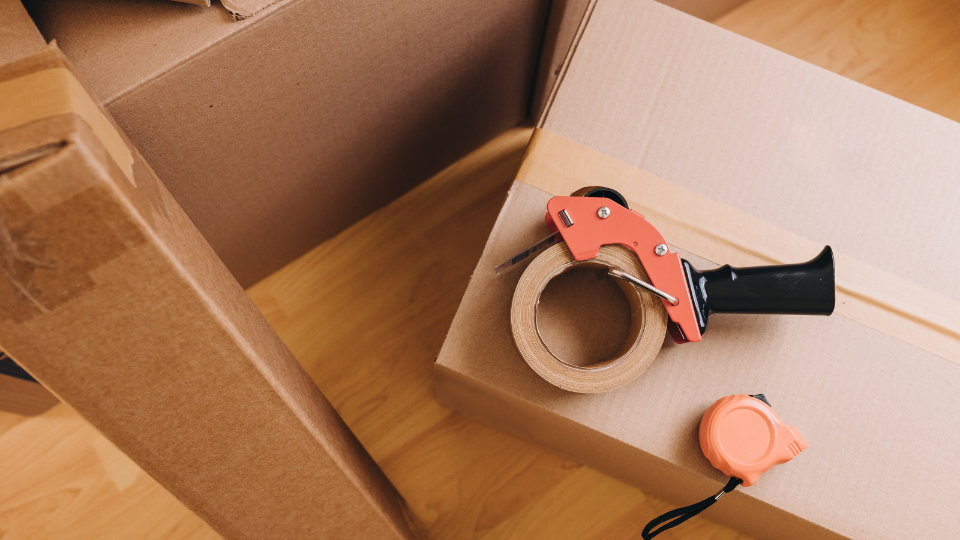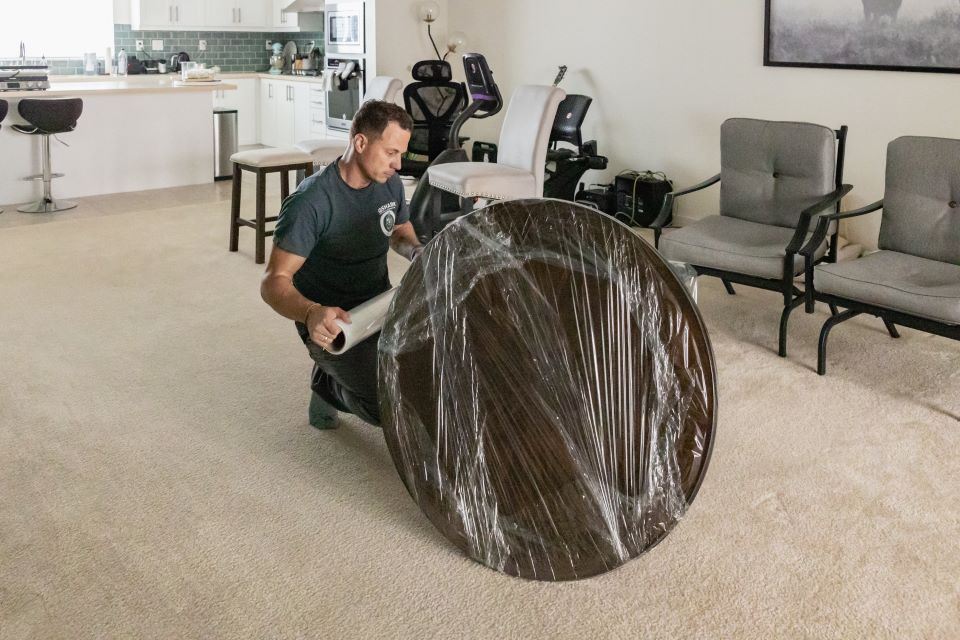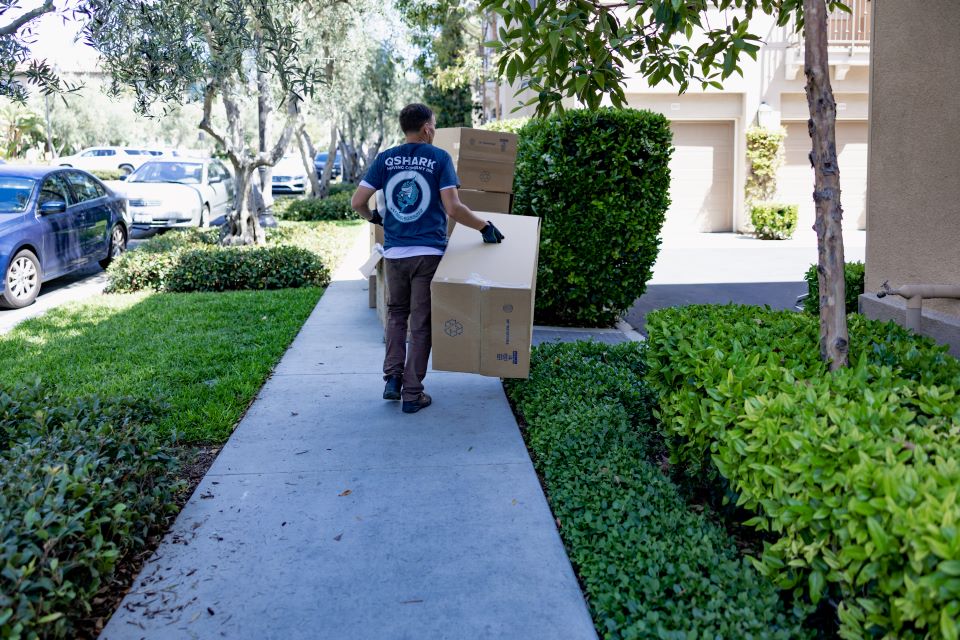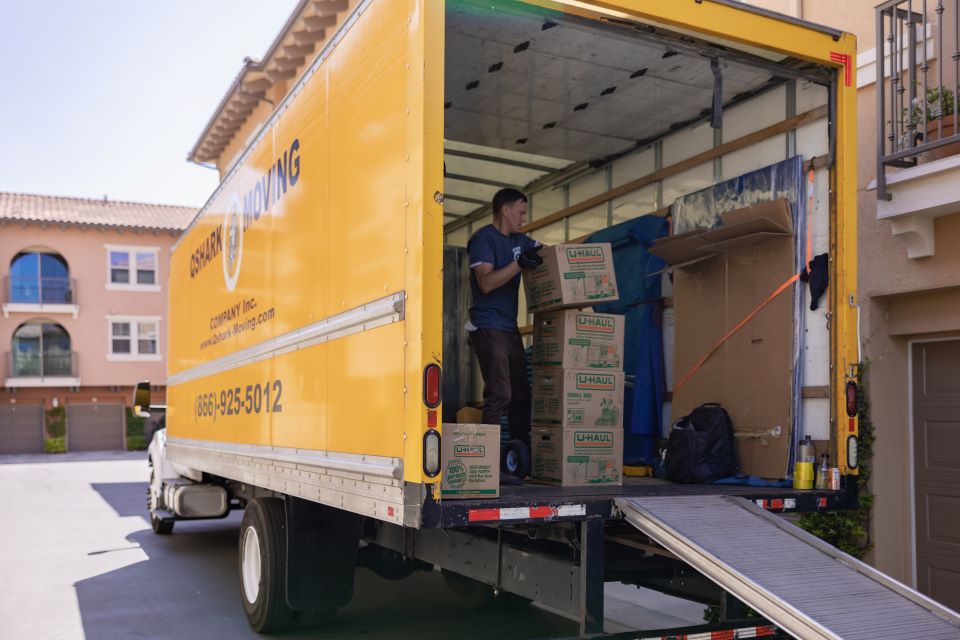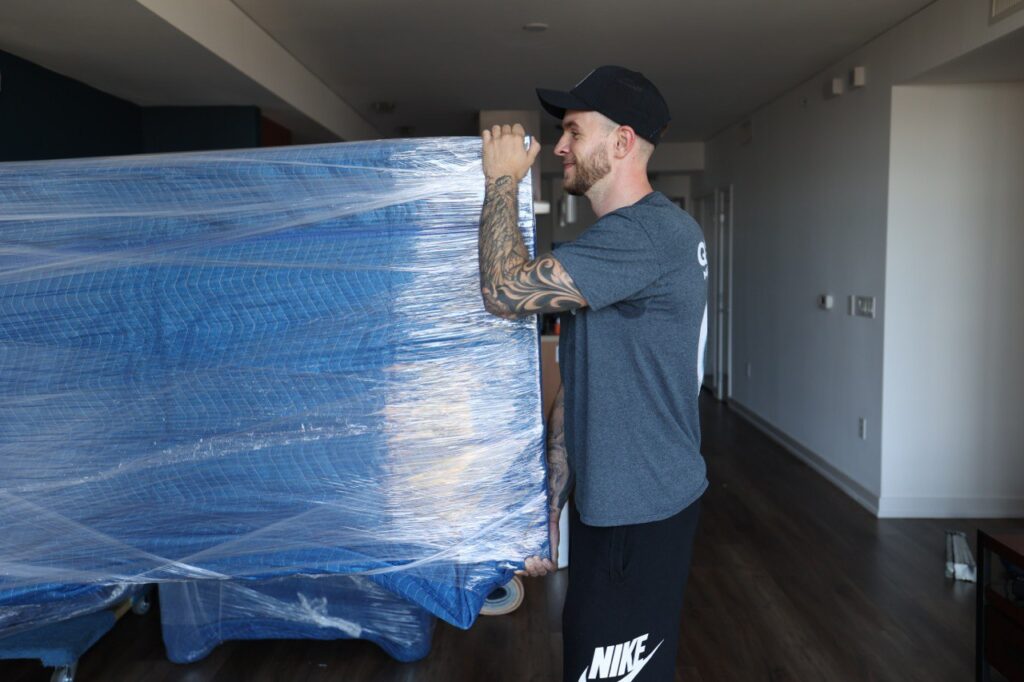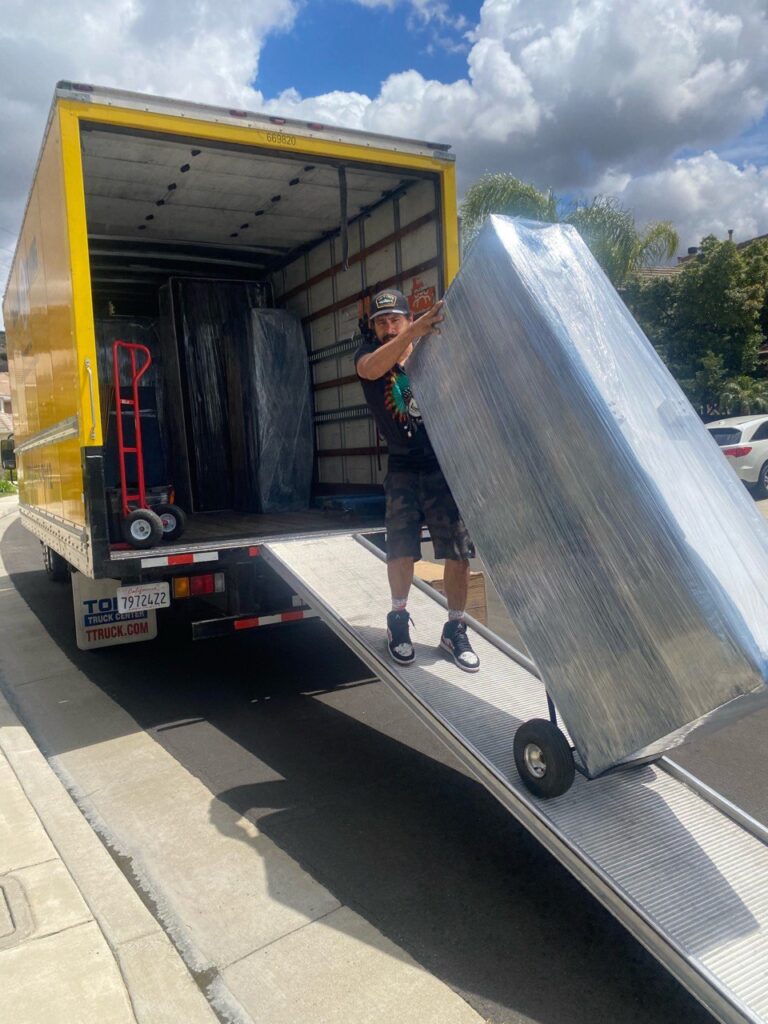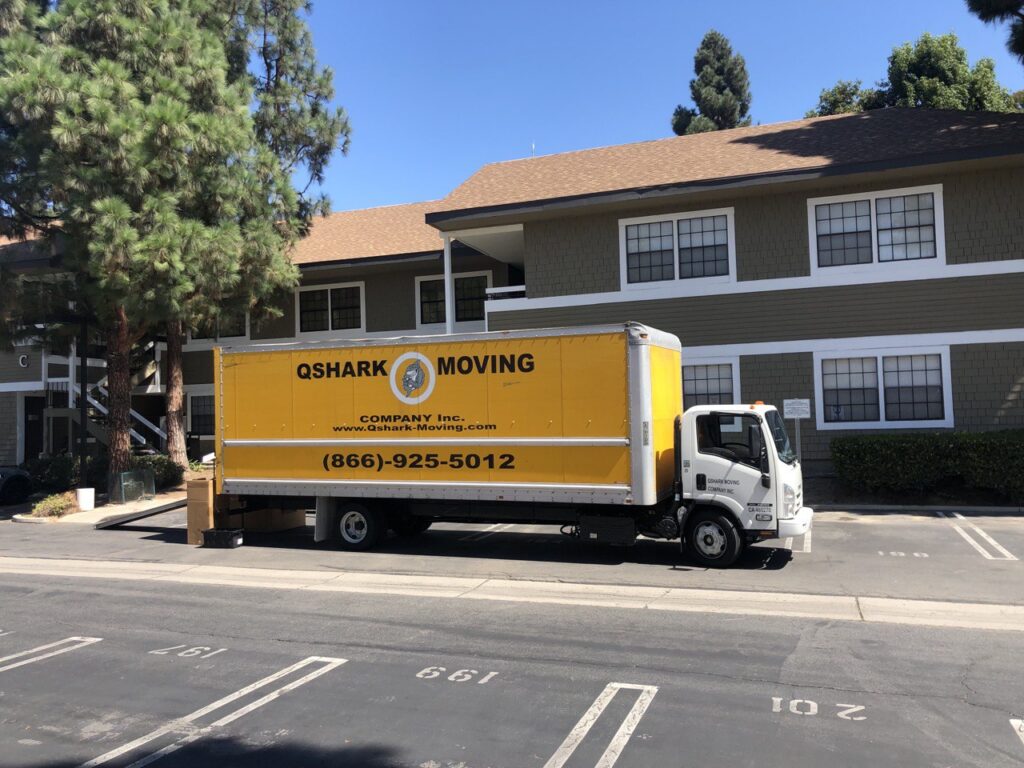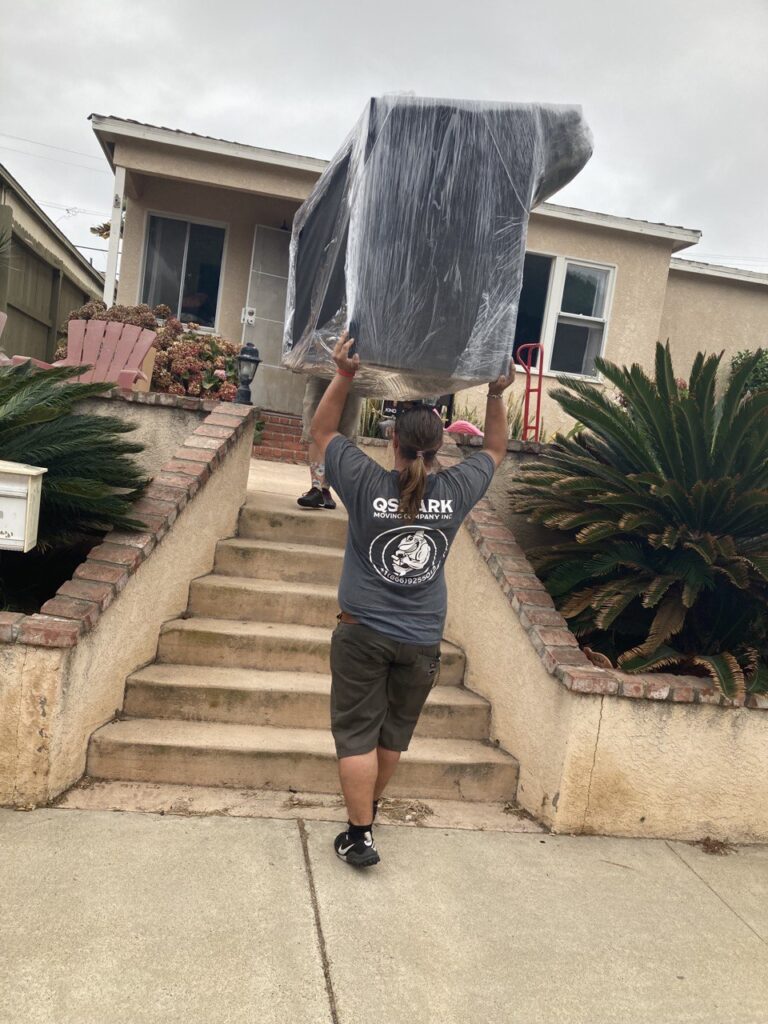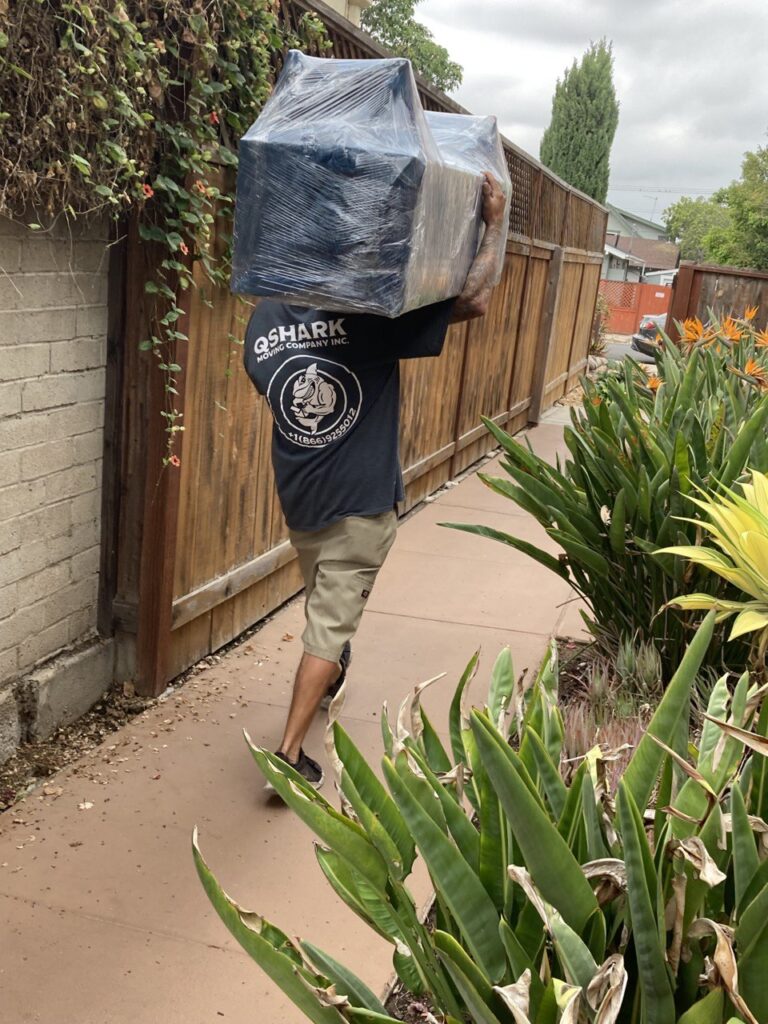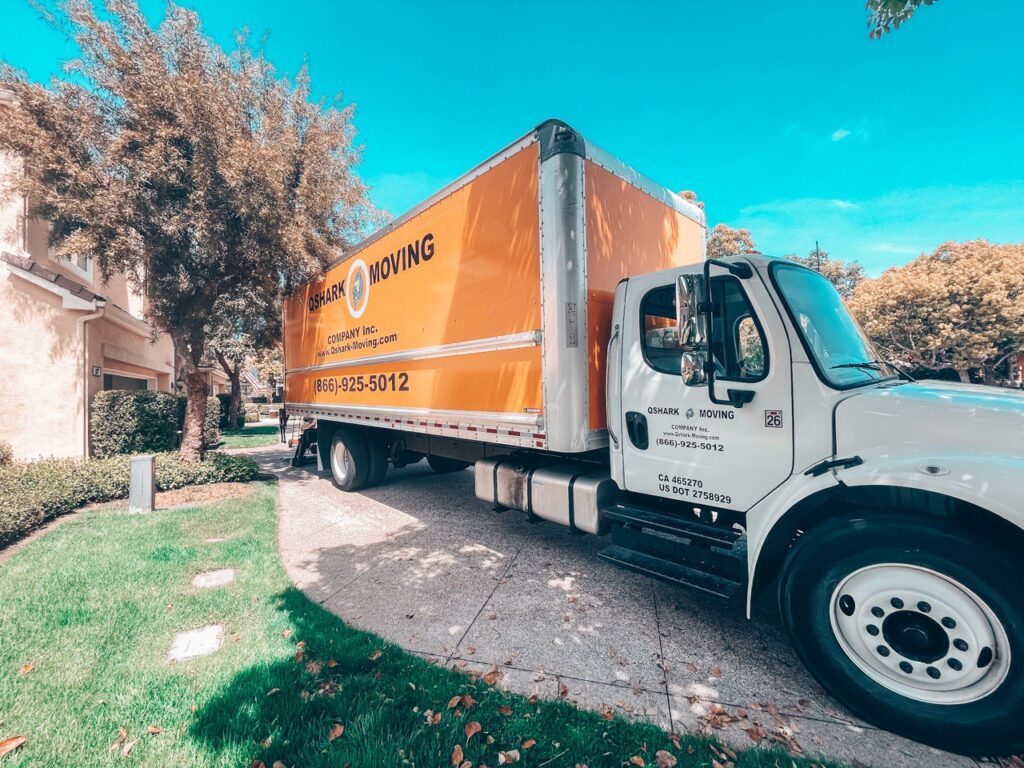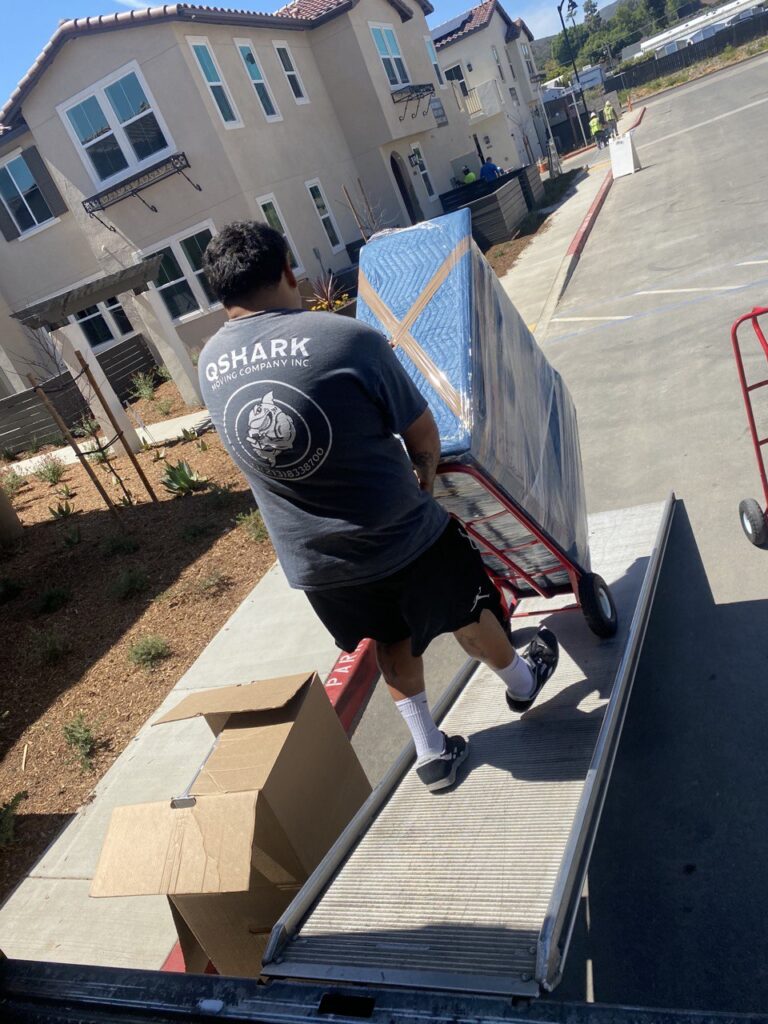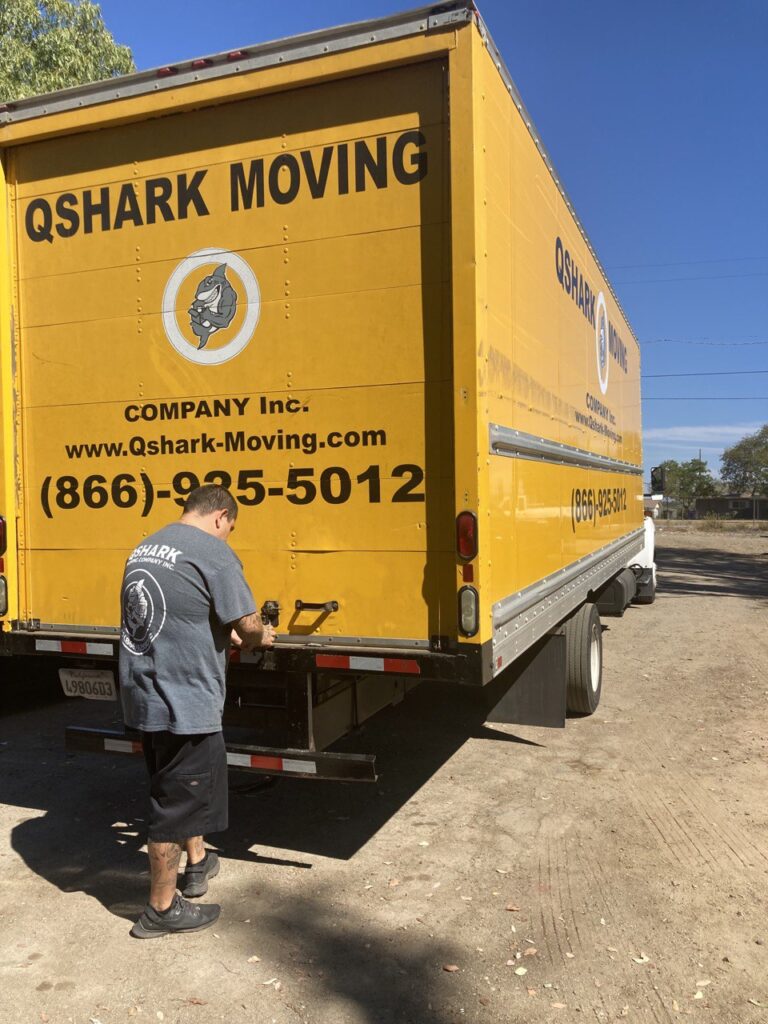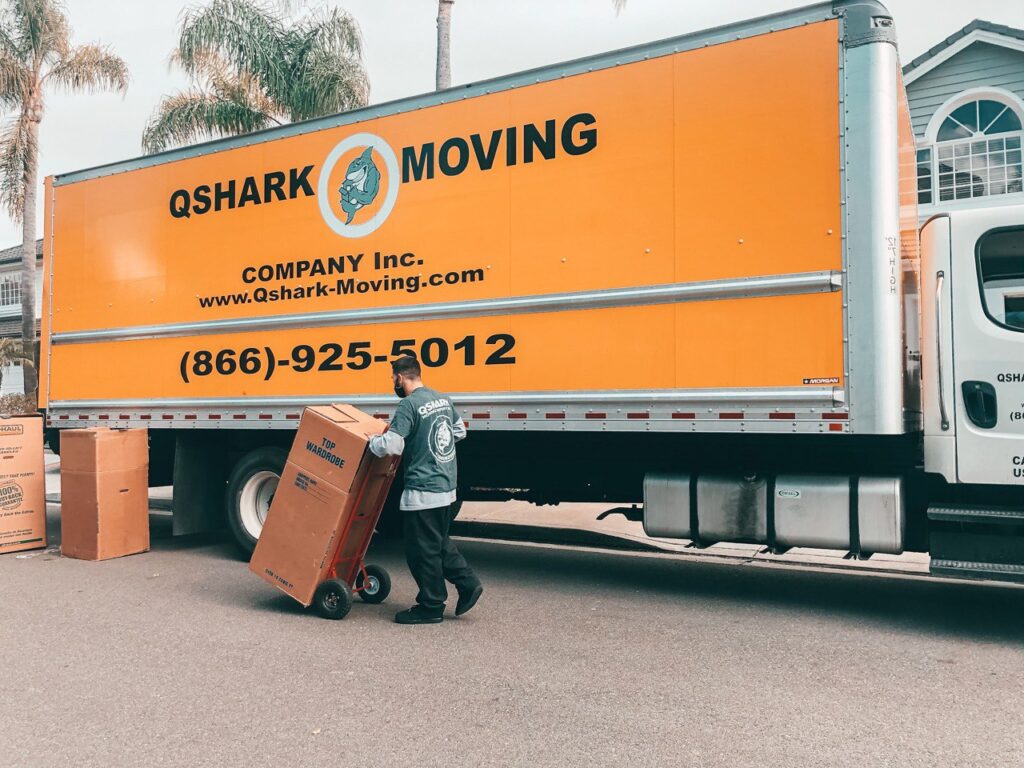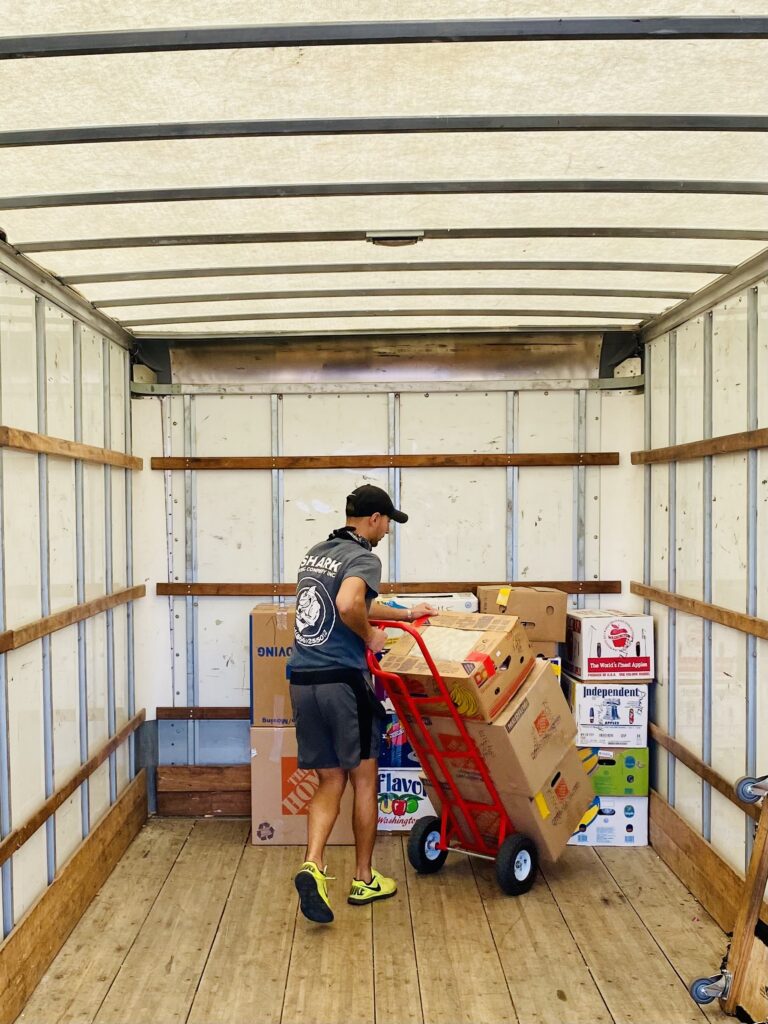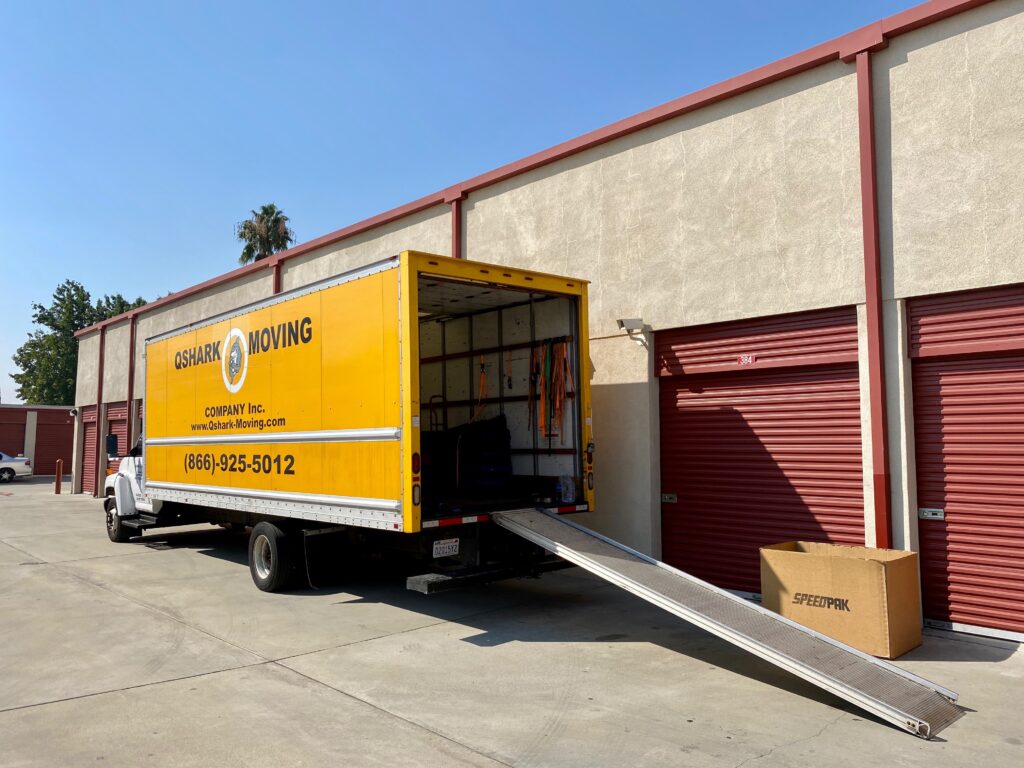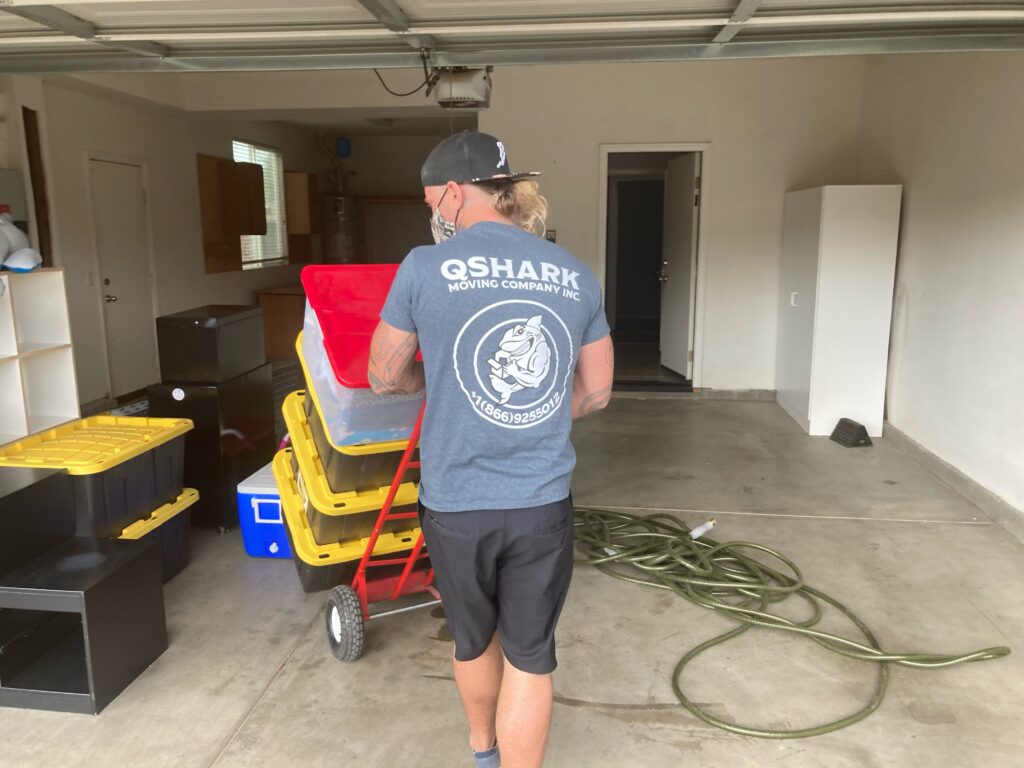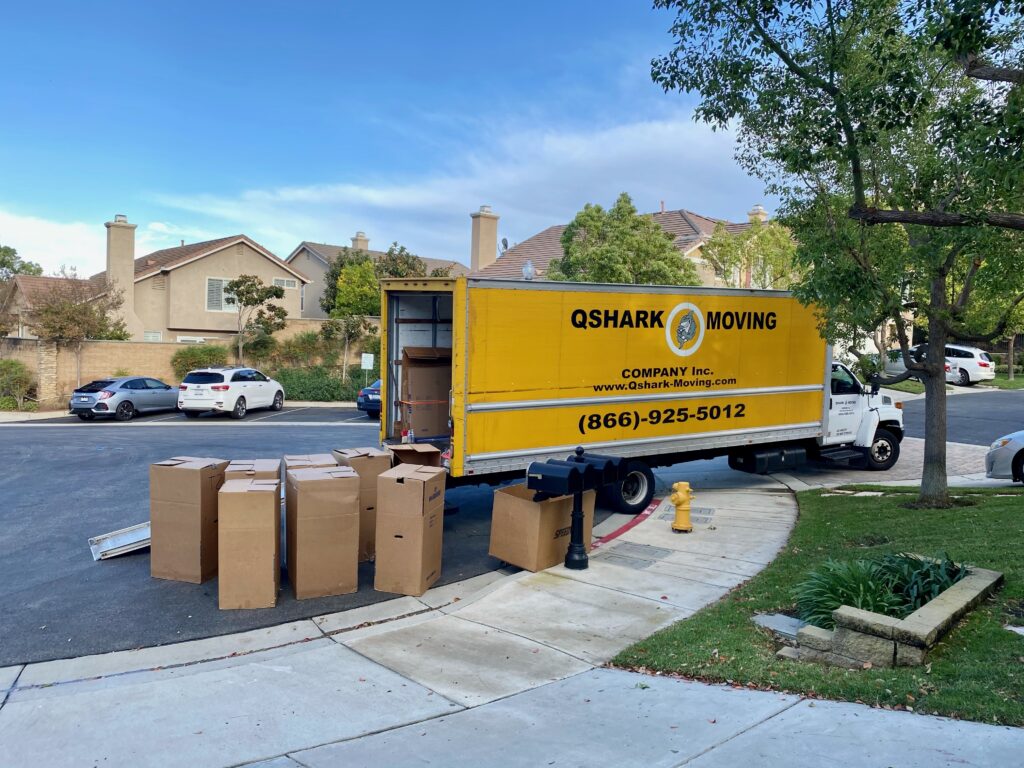How To Pack Books For Moving

Summary: This comprehensive guide walks you through How To Pack Books For Moving. Learn how to sort, pack, and move your book collection safely and effectively. Whether you’re a book lover with a vast collection or someone looking to protect your reading materials during a move, this guide by QShark Moving Company has you covered.
Short Read:
| Section | Key Points |
|---|---|
| Materials Needed | Boxes of different sizes, packing paper, bubble wrap, packing tape, permanent marker |
| Preparing for Packing | Clean and sort books, decide which books to keep, sell, donate, or discard |
| Packing Process | Choose right box size, line box for protection, place books correctly, fill gaps, seal and secure box, label box |
| Special Considerations | Take extra care when packing antique, valuable, large, heavy, or awkwardly shaped books, and softcover books |
| Moving Day: Handling and Loading | Use correct lifting techniques, position boxes correctly in the moving truck |
| Unpacking the Books | Unpack carefully, re-check for any potential damage, organize books in the new place |
| Why Choose QShark Moving Company | Expertise in moving books and other fragile items, other services offered, testimonials, contact information |
Whether moving across town or to a new city, one of the most daunting tasks can be packing your book collection. Books, while seemingly sturdy, can be damaged if not packed correctly. Knowing the best practices for packing books for a move is essential. As your professional movers, we at QShark Moving Company understand the challenges of moving and are here to help.
In this article, we’ll provide a comprehensive, step-by-step guide on how to pack books for moving. We’ll cover everything from preparing your books for the move to packing them securely and unpacking them at your new location.
Let’s dive in!
Materials Needed
Before we start the packing process, gathering all the necessary materials is important. This will make the process smoother and more efficient. Here’s what you’ll need:
- Different Types of Boxes: Depending on the size and weight of your books, you may need small to medium-sized boxes. Books are heavy, so it’s best to use smaller boxes to make them easier to carry.
- Packing Paper and Bubble Wrap: These will fill any gaps in the boxes to prevent the books from shifting during the move.
- Packing Tape: This is essential for sealing the boxes. Ensure that you have good-quality tape that can withstand the weight of the books.
- Permanent Marker for Labeling: Labeling your boxes will help you track what’s inside each box, making the unpacking process easier.
Preparing for Packing
Now that you have your materials ready, it’s time to prepare your books for packing.
- Cleaning the Books: Clean each book to remove any dust or dirt. This can be done with a dry cloth. Consider using a soft brush to avoid damaging the book for older or more delicate books.
- Sorting Books by Size and Type: Sort your books by size and type (hardcover, softcover, etc.) This will make it easier to pack them effectively.
- Deciding Which Books to Keep, Sell, Donate, or Discard: Moving is a great opportunity to declutter. Consider if there are books you no longer need or want. These could be sold or donated, reducing the number of items you need to move.
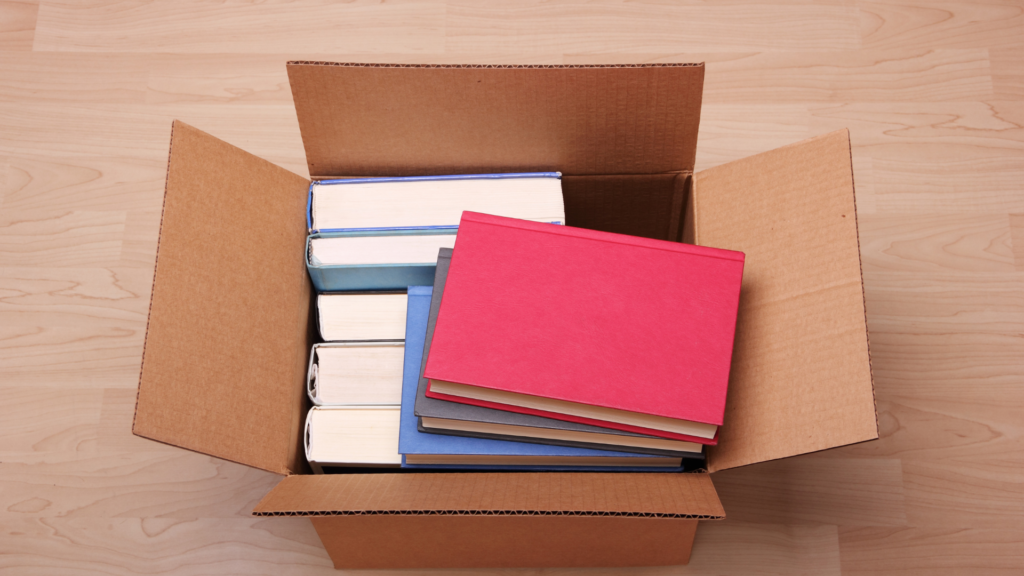

Packing Process Step-by-Step
Now we get into the heart of the matter: the step-by-step process of packing your books for moving.
Choosing the Right Box Size
For books, we always recommend using smaller boxes. Books are heavier than they might appear, and loading too many into a large box can make it unmanageably heavy. Aim for a box size that, when filled, you can lift without straining.
Properly Lining the Box for Protection
To protect your books, line the bottom of your box with crumpled packing paper or bubble wrap. This creates a cushion that will absorb any shocks during the moving process.
Placing the Books in the Box – Correct Positioning
Arrange your books in the box carefully. Lay them flat or with the spine facing down to prevent damage to the binding. Avoid standing them upright as you would on a shelf.
Filling Gaps with Packing Paper or Bubble Wrap
Once you have filled your box, check for any gaps. Fill these with crumpled packing paper or bubble wrap to ensure the books do not move around during transport.
Sealing and Securing the Box
With your books packed snugly, close the box and seal it securely with packing tape. Run the tape along all the seams to reinforce the box.
Properly Labeling the Box
Label the box ‘Books’ using your permanent marker and indicate which room they came from. This will make unpacking and arranging your books easier in your new home.
Special Considerations
Sometimes, you’ll need extra care when packing certain types of books.
Packing Antique or Valuable Books
Antique or valuable books should be wrapped individually using packing paper. Consider using an additional layer of bubble wrap for added protection.
Packing Large, Heavy, or Awkwardly Shaped Books
Use a larger box for oversized books but ensure not to load it too heavily. Remember, safety should always come first.
Packing Softcover Versus Hardcover Books
Softcover books are more prone to damage than hardcover books. Pack them separately and fill any empty spaces with paper or bubble wrap if possible.
With this comprehensive guide, you’re now on your way to packing your books like a professional mover. In the next section, we’ll provide tips on handling and loading your boxes of books on a moving day.


Moving Day: Handling and Loading Boxes of Books
Your books are packed and ready to move to your new location. Here’s how to handle and load your boxes of books on a moving day:
Correct Lifting Techniques
Lifting heavy boxes incorrectly can lead to injury. Always lift with your knees, not your back. Keep the box close to your body, and maintain good posture as you lift.
Positioning in the Moving Truck
When loading the moving truck, place heavier boxes like those filled with books at the bottom and towards the front of the truck. This helps keep the truck balanced and prevents lighter boxes from being crushed.
Unpacking the Books at the New Location
Upon reaching your new home, it’s time to unpack your books and set up your new reading space.
Best Practices for Unpacking
Open the boxes and remove each book, checking for any potential damage. This is also a great time to organize your books as you unpack. You might want to arrange them by author, genre, or any way that suits your new space.
Re-checking for Any Potential Damage
There can be unexpected incidents even with the most careful packing and moving. Check each book for any possible damage during the move. Any damaged items can be claimed if you have opted for insurance (a service often provided by professional movers).
Tips for Organizing Books in the New Place
Consider the layout and storage options in your new home. You might want to invest in new bookshelves or create a dedicated reading space. Remember to place your books away from direct sunlight and damp areas to protect them from damage.
Why Choose QShark Moving Company for Your Moving Needs
While packing and moving your books is certainly something you can do yourself, hiring professional movers like QShark Moving Company can make the process much more efficient and stress-free.
Expertise in Moving Books and Other Fragile Items
At QShark, we have expertise in packing and moving books and other fragile items. We ensure the safety and security of your belongings from the start to the finish of your move.
Other Services Offered
Aside from moving, we also offer packing services, providing all the necessary materials and packing all your items.
Testimonials from Satisfied Customers
Many satisfied customers highly recommend our services. Check out our testimonials to see what our customers are saying.
Contact Information and Next Steps to Schedule a Move
To schedule your move or learn more about our services, visit our website or contact us directly. Our team is ready to assist you.
Conclusion How To Pack Books For Moving
Moving doesn’t have to be a stressful experience. With these tips on How To Pack Books For Moving, you can safeguard your books from any potential damage during moving. QShark Moving Company is always here to help with all your moving needs. Happy moving!



